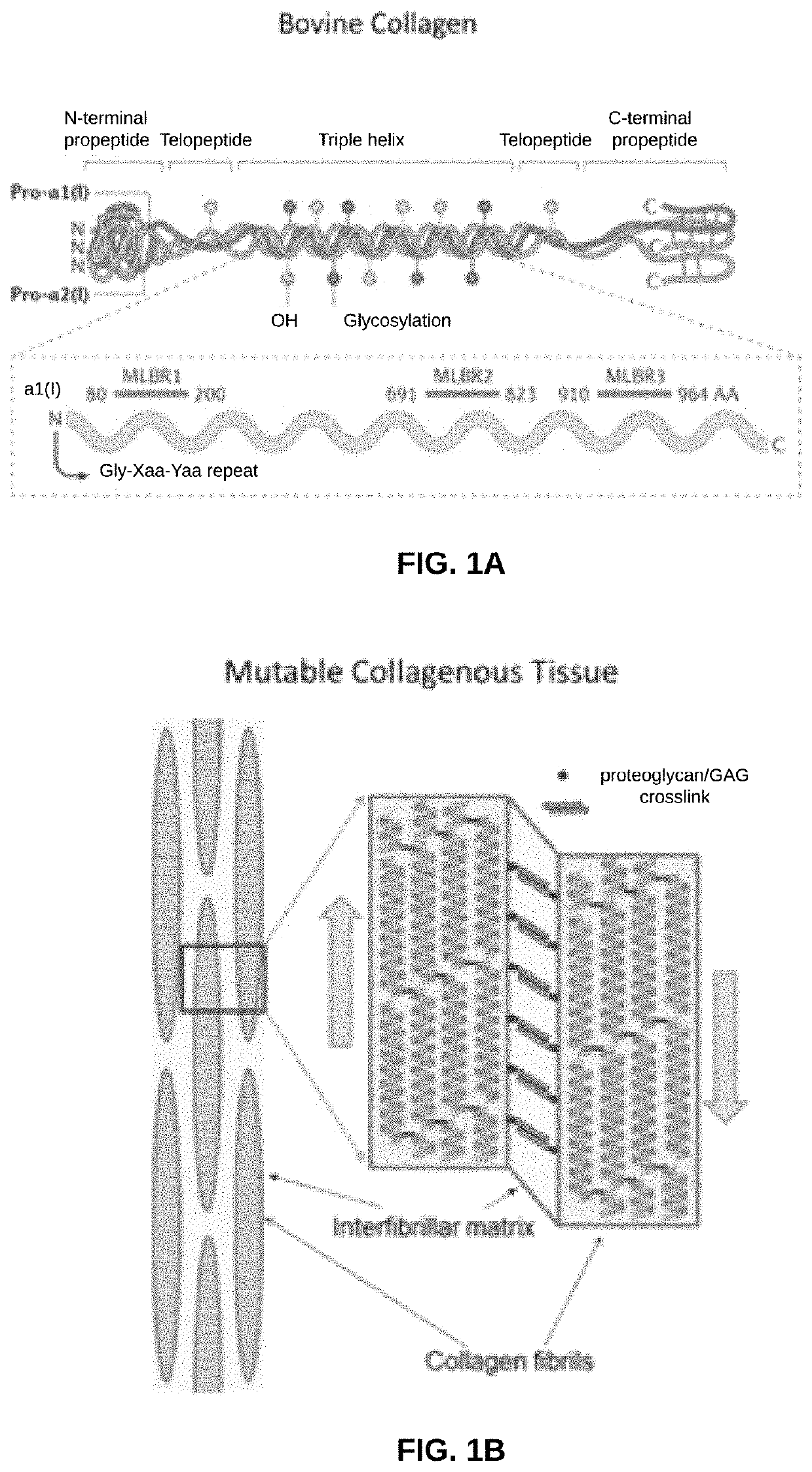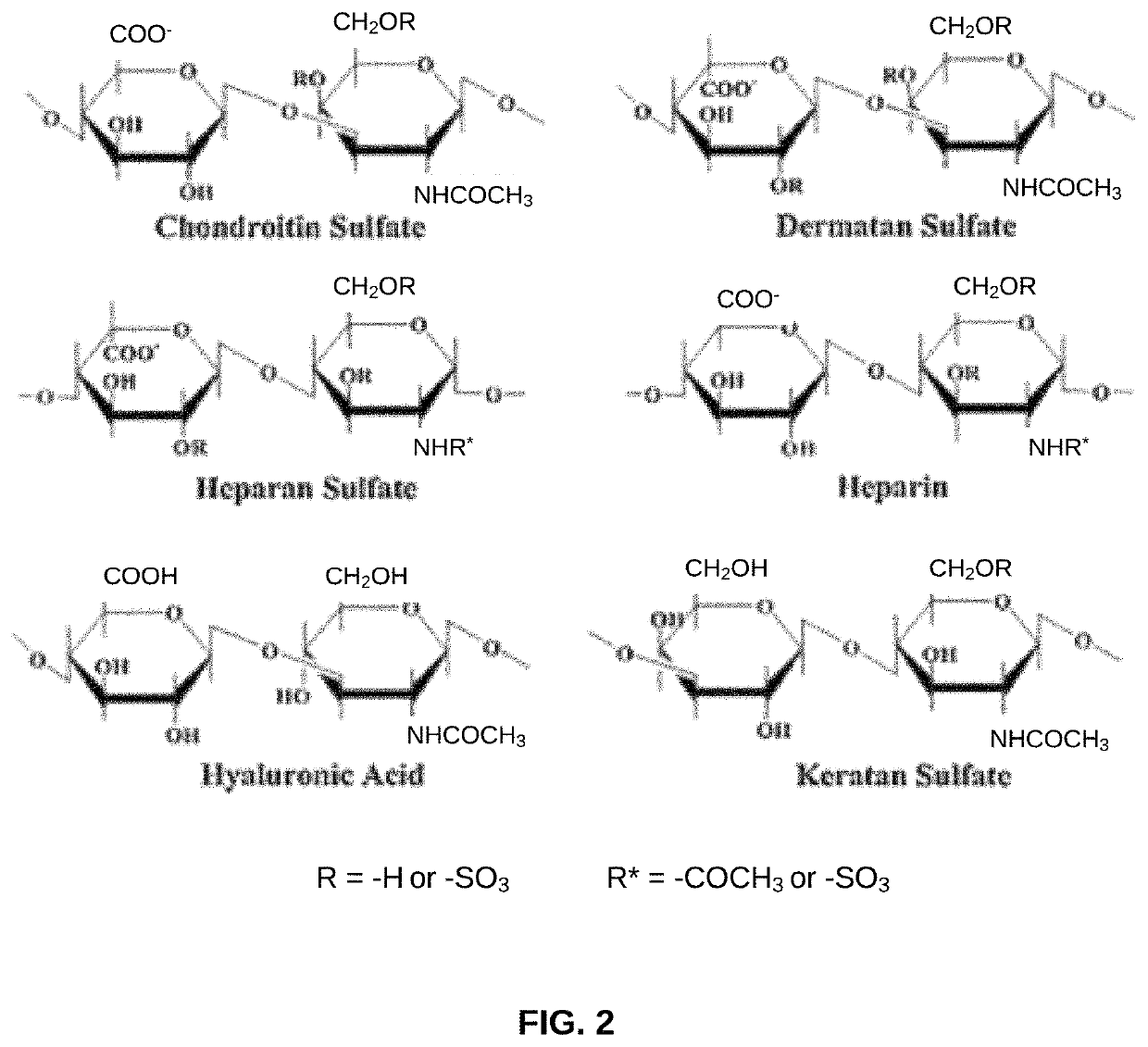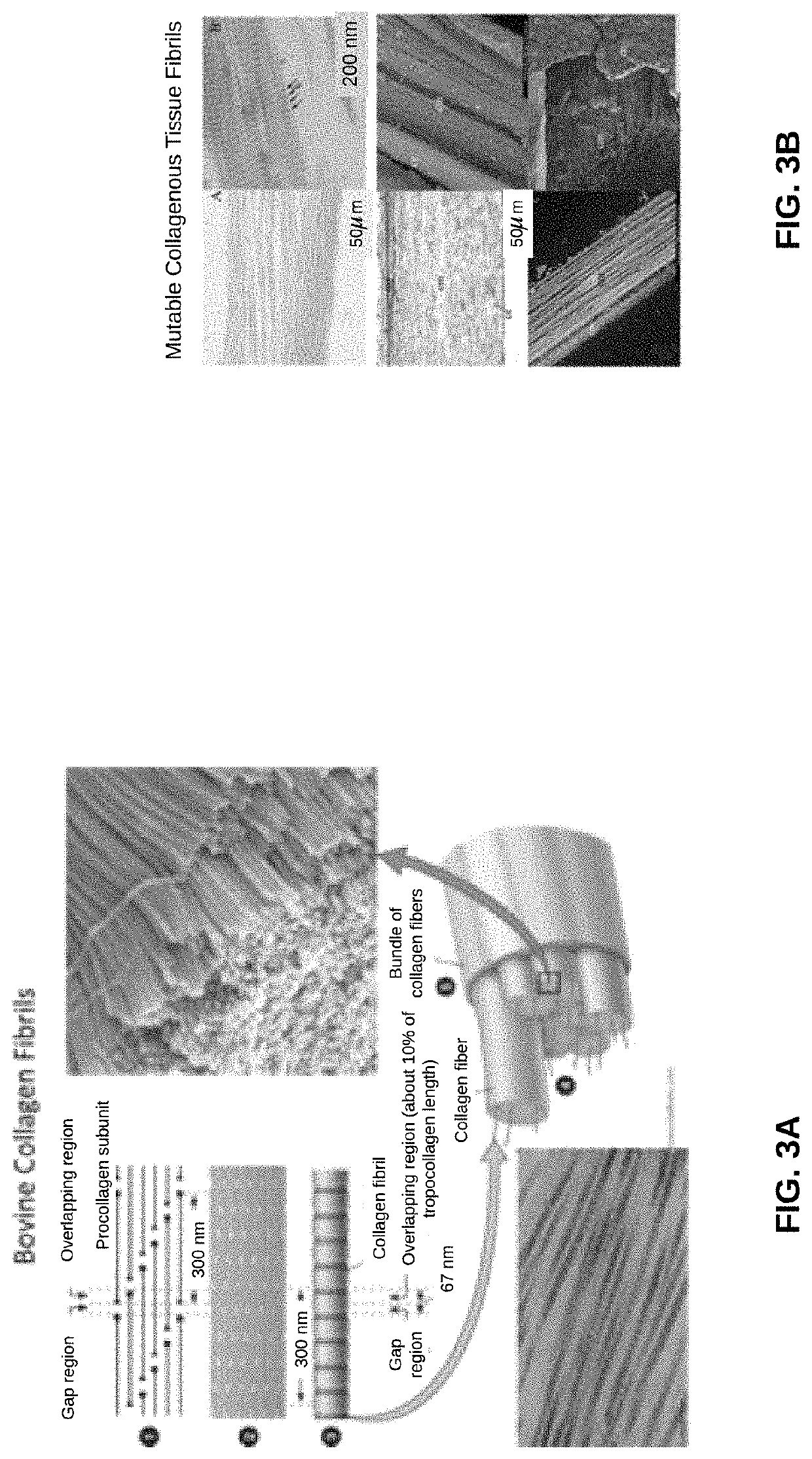Biomaterial devices and topical compositions for guided tissue regeneration
a biomaterial and tissue technology, applied in the direction of prosthesis, drug compositions, aerosol delivery, etc., can solve the problems of limited stability, biodegradability and tensile strength, insufficient biocompatibility, etc., to improve mechanical properties, improve mechanical properties, and increase the effect of composites
- Summary
- Abstract
- Description
- Claims
- Application Information
AI Technical Summary
Benefits of technology
Problems solved by technology
Method used
Image
Examples
example 1
san Composites: Preparation, Data, and Applications
[0111]Pharmaceutical grade chitosan (deacetylation degree of 92% calculated by 1H NMR; mean molecular weight of 185 kDa calculated by specific viscosimetry) was bought from Sigma Aldrich (St. Louis, Mo., USA). The degree of deacetylation and mean molecular weight distribution can be controlled in the production of MCT-chitosan composites to provide chitosan with higher or lower degrees of deacetylation, and / or higher or lower mean molecular weights.
[0112]Mutable collagenous tissue (MCT) was isolated from marine invertebrate echinoderms. Adult specimens of the sea urchin, starfish and sea cucumber were collected by scuba divers in China, Tahiti, and Japan, among other locations, and immediately dissected. Samples of sea urchin peristomial membranes, starfish aboral arm walls and sea cucumber whole body walls were collected and stored at −20° C. for the subsequent collagen extraction protocol described by Ferrario C., Leggio L., Leone...
example 2
san Composite 3D-Sponges for Applications in GTR, Wound Healing, and Tissue Engineering
[0135]Chitosan (CHT) has been reported to be biocompatible and bio-absorbable. In particular, CHT is considered to be a good wound-healing accelerator. On the other hand, collagen (MCT) is one of the most widely used matrix biomaterials in tissue engineering. Highly porous MCT single 3D-sponges have been used to support in vitro growth of many types of tissues. Hybrid 3D-sponge biomaterials were fabricated by mixing CHT and MCT, isolated from sea cucumber specimens, at different mass ratios, applying previously developed methodologies involving solvent casting and freeze-drying. MCT / CHT hybrid 3D-sponges were characterized according to their water uptake capacity, mechanical properties, thermal behavior (TGA), and morphology (SEM). Hybrid 3D-sponges showed improved stability, greater porosity, increased thermal stability, and mechanical properties, as well higher biodegradation as compared to sing...
example 3
un MCT-Chitosan Composite Nanofibers as Biocompatible Sponges for Cell Proliferation in Wound Healing and Tissue Engineering Applications
[0159]Electrospun nanofibers (ESNFs) were prepared from MCT-chitosan composite materials. Polyvinyl alcohol (PVA) was used as an aiding agent. MCT-chitosan / PVA mixed solutions of different volume ratios (100:0, 80:20, 60:40, 40:60, 20:80 and 0:100) were prepared and adjusted to be similar in viscosity and electrical conductivity suitable for electrospinning. Morphology of the ESNFs was examined using scanning electron microscopy (SEM), Fourier transform infrared spectrometer (FTIR), and differential scanning calorimetry (DSC). Studies were used to characterize chemical composition and thermal characteristics of the nanofibers (NFs). The ability of the NFs to support fibroblast cell proliferation was investigated in vitro using the optimized MCT-chitosan / PVA solutions. The results show that MCT-chitosan-based ESNFs are well-suited for fibroblast cel...
PUM
| Property | Measurement | Unit |
|---|---|---|
| molecular weight | aaaaa | aaaaa |
| molecular weight | aaaaa | aaaaa |
| mean molecular weight | aaaaa | aaaaa |
Abstract
Description
Claims
Application Information
 Login to View More
Login to View More - R&D
- Intellectual Property
- Life Sciences
- Materials
- Tech Scout
- Unparalleled Data Quality
- Higher Quality Content
- 60% Fewer Hallucinations
Browse by: Latest US Patents, China's latest patents, Technical Efficacy Thesaurus, Application Domain, Technology Topic, Popular Technical Reports.
© 2025 PatSnap. All rights reserved.Legal|Privacy policy|Modern Slavery Act Transparency Statement|Sitemap|About US| Contact US: help@patsnap.com



